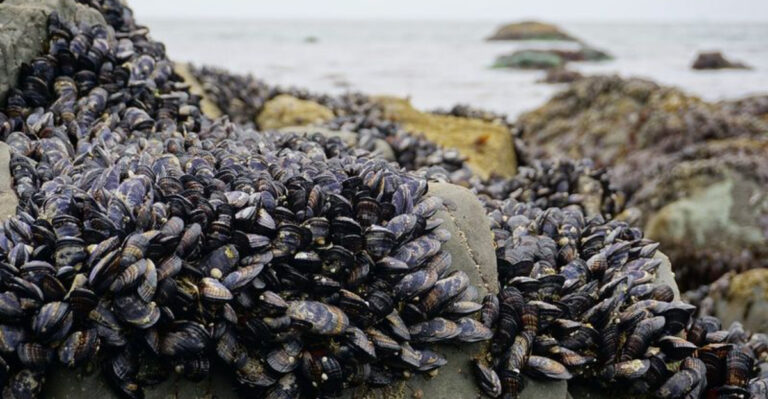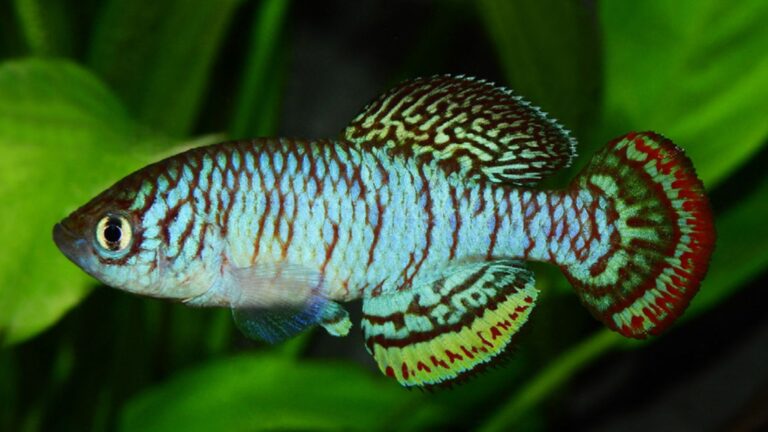16 Prehistoric Giants That Existed Before Dinosaurs
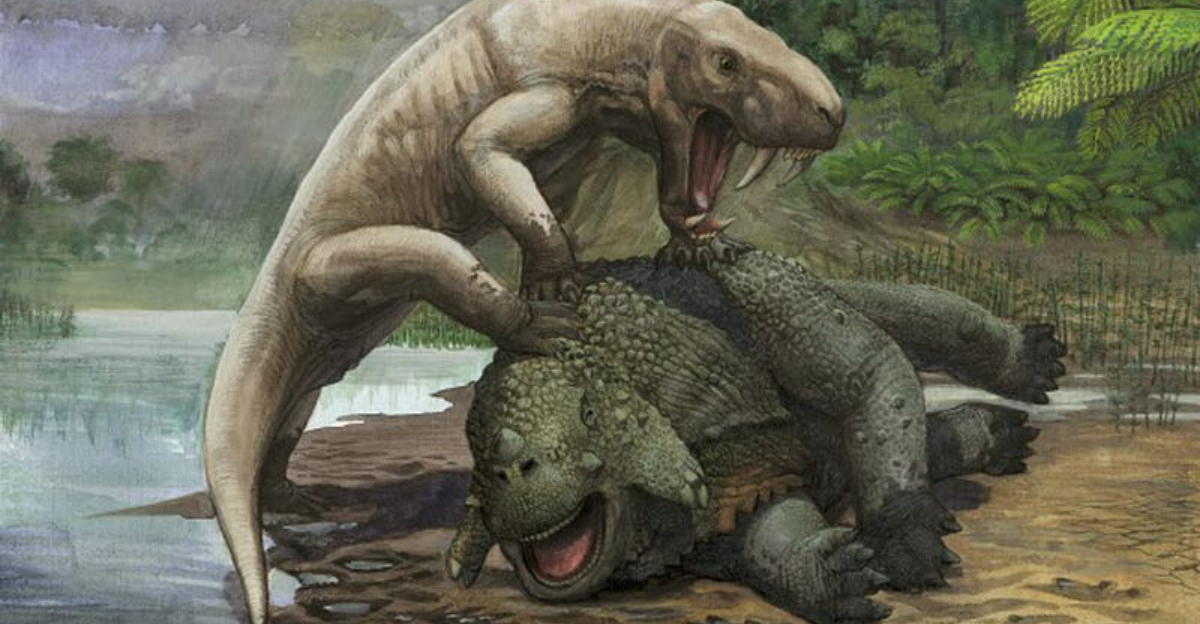
Before dinosaurs roamed the Earth, an array of colossal creatures dominated the prehistoric landscapes. These giants, intriguing and massive, showcase a world of nature’s wonder.
Let’s explore these incredible behemoths and marvel at their existence.
1. Arthropleura
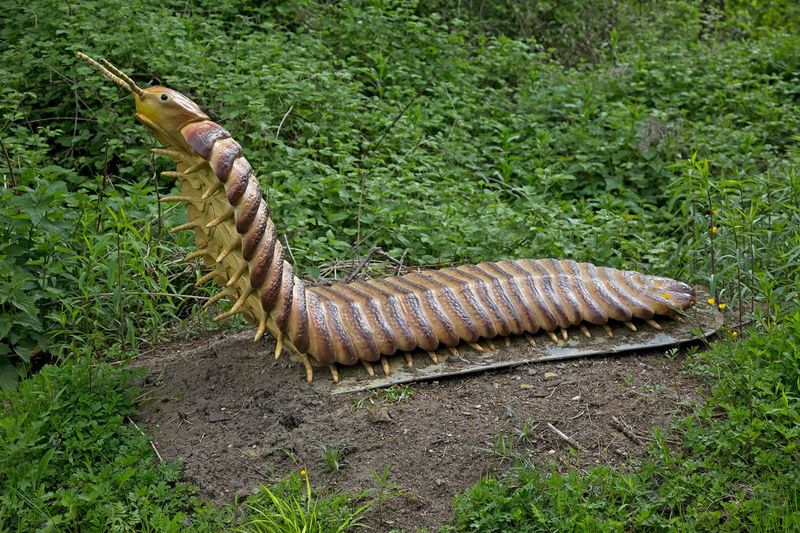
Imagine a millipede the size of a car slithering through prehistoric forests. Arthropleura could reach up to 8 feet long!
This colossal arthropod was a herbivore, munching on dense vegetation. Its immense size likely deterred predators. Today, its fossilized remains astound scientists, providing a glimpse into the lush, carboniferous forests it called home.
2. Meganeura
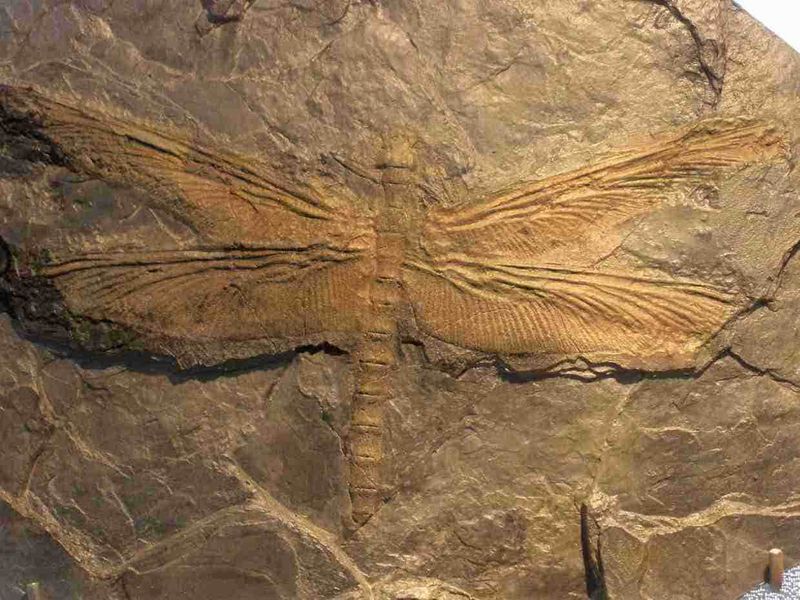
Picture a dragonfly as big as an eagle! Meganeura soared the skies with a wingspan over 2 feet. This aerial predator thrived by snatching insects mid-flight.
Its size was made possible by high oxygen levels. A true marvel of the Carboniferous period, Meganeura’s fossils inspire awe and fuel imaginations of a world gone by.
3. Pulmonoscorpius
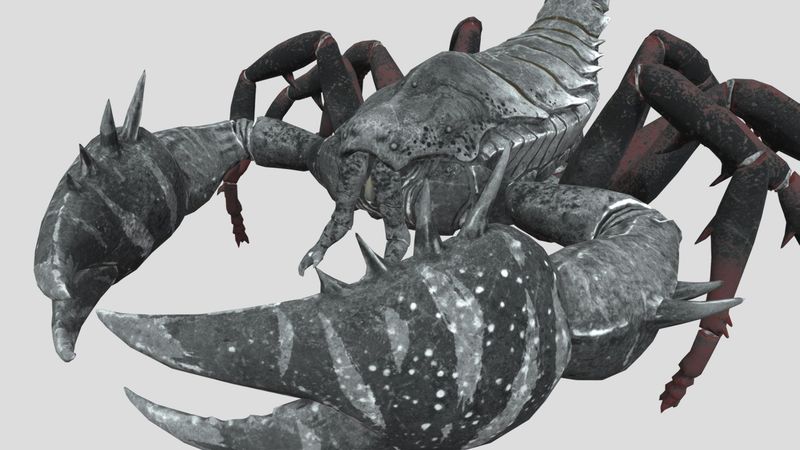
Pulmonoscorpius, a giant scorpion, prowled prehistoric forests. Measuring about 28 inches, this predatory arthropod hunted insects and small vertebrates.
Its menacing pincers and potent venom made it a formidable hunter. Fossils found in Scotland reveal its intricate exoskeleton, offering thrilling insights into the eerie nightlife of ancient ecosystems.
4. Proterogyrinus
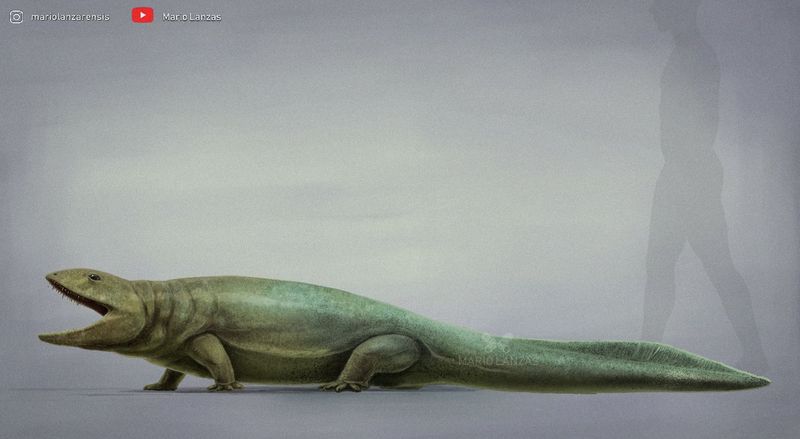
Proterogyrinus roamed swamps and riverbanks, resembling a large salamander. With a length of over 6 feet, it was a dominant predator.
Its strong limbs and sharp teeth aided in hunting fish and small creatures. Fossils illustrate its adaptability, revealing a creature thriving in the watery, verdant landscapes of the Carboniferous period.
5. Dimetrodon
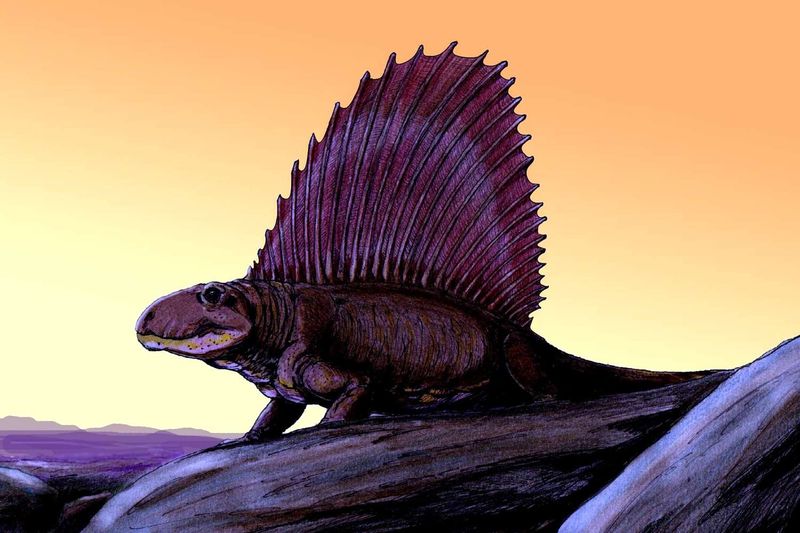
Not a dinosaur, but Dimetrodon was a sail-backed predator from the early Permian period. Stretching up to 15 feet, this reptile had a prominent sail on its back.
Scientists believe it regulated body temperature. An apex predator, it dominated the landscape, hunting for prey, and laying the groundwork for future terrestrial giants.
6. Eryops
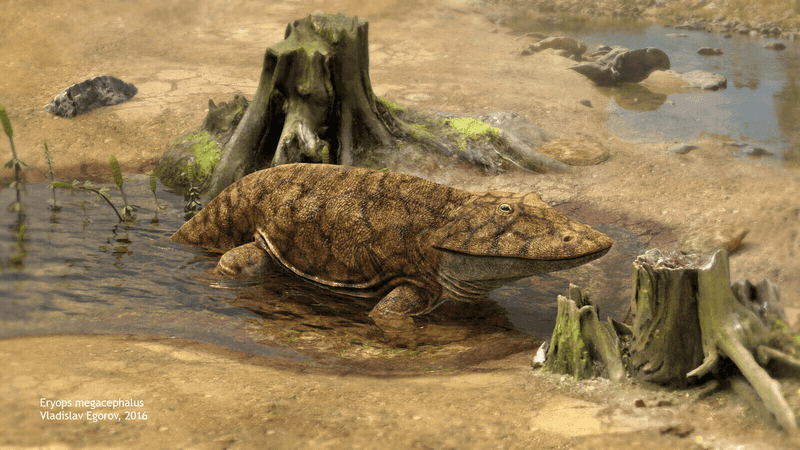
Eryops, a stout amphibian, dwelled in Permian swamps. With a broad skull and strong limbs, it hunted fish and small animals.
Measuring around 5 feet, Eryops was a fearsome predator. Fossils show its adaptability, surviving harsh climates. A cornerstone of ancient ecosystems, Eryops bridges the gap between aquatic and terrestrial life.
7. Tullimonstrum
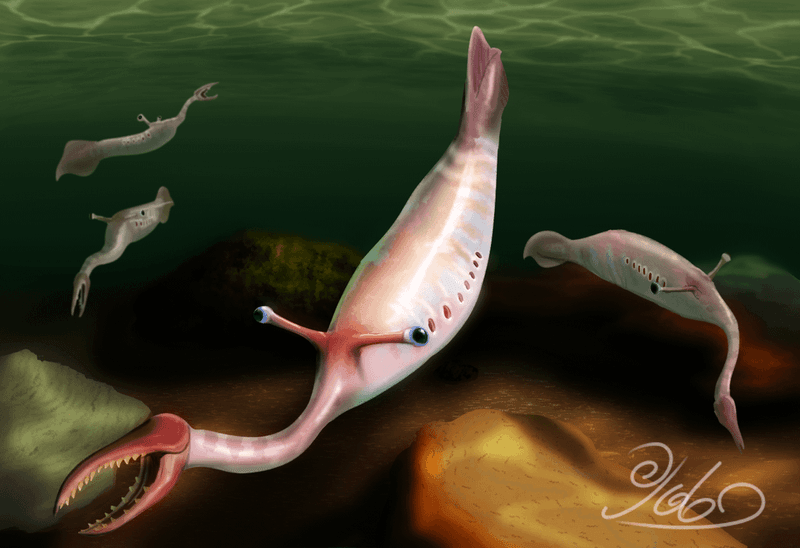
Tullimonstrum, or the Tully Monster, mystifies with its strange anatomy. This marine oddity, about a foot long, swam through ancient seas.
Its tube-like body and peculiar eyes baffle scientists even today. Lacking clear classification, it remains a puzzle of prehistoric life. Fossils in Illinois fuel debates, keeping its enigmatic legacy alive.
8. Romer’s Gap Fish
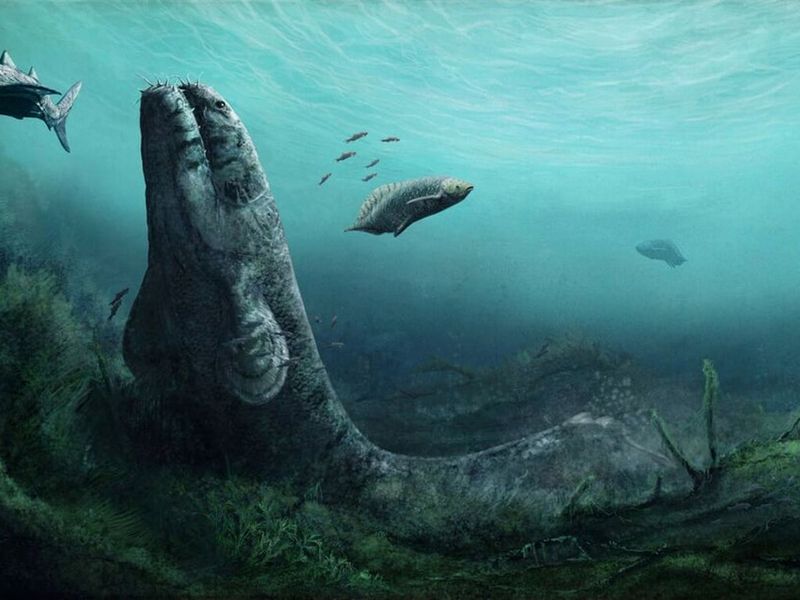
Romer’s Gap Fish filled a mysterious evolutionary void during the Devonian period. These large fish, with robust bodies and powerful fins, thrived in ancient waters.
Their existence provides crucial insights into vertebrate evolution. By studying these fossils, scientists piece together evolutionary leaps that paved the way for terrestrial vertebrates.
9. Brontoscorpio
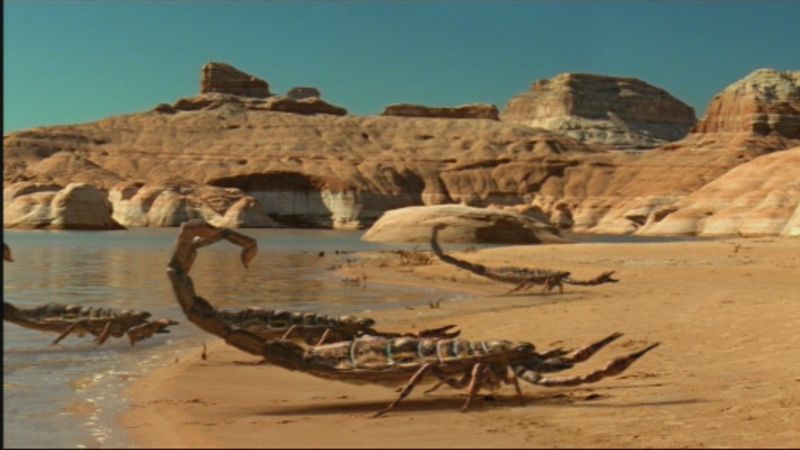
Brontoscorpio, the giant scorpion of the Silurian period, struck awe with its intimidating presence. Reaching nearly a meter, it hunted in ancient seabeds.
Its powerful pincers and formidable stinger made it a top predator. Fossils paint a vivid picture of its life, offering a thrilling glimpse into predatory dynamics before the dawn of dinosaurs.
10. Gorgonops
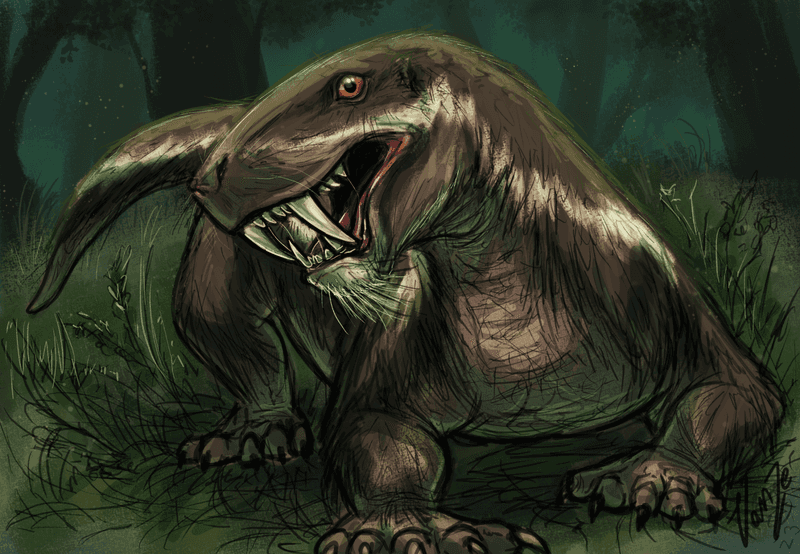
Gorgonops, a saber-toothed predator, dominated late Permian landscapes. With elongated canine teeth, it was a formidable hunter.
Measuring up to 10 feet, its agility was unmatched. Fossils reveal robust limbs and a powerful bite. Gorgonops stands as a symbol of nature’s relentless predatory evolution, a precursor to the mighty predators of the Mesozoic.
11. Inostrancevia
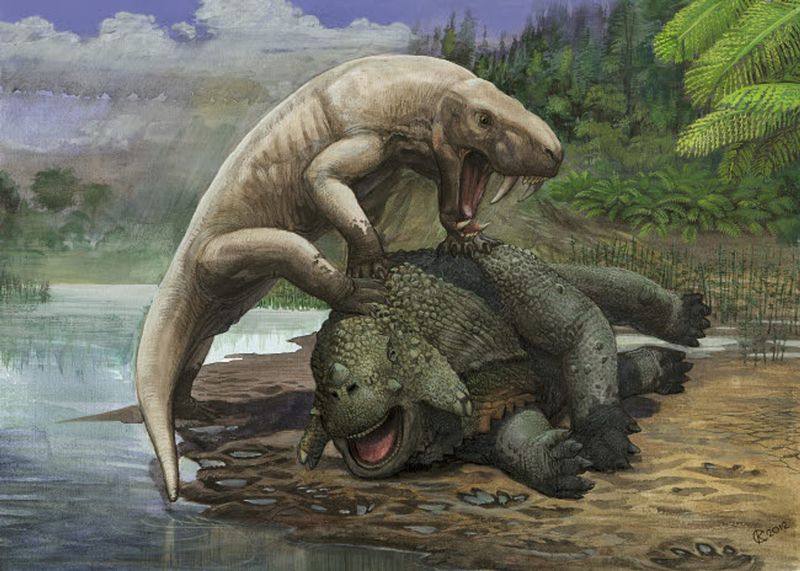
Inostrancevia, with its saber-like teeth, was a top predator in the late Permian period. This mammal-like reptile could reach over 11 feet.
Its powerful jaws and agile body marked it as a fearsome hunter. Fossils from Russia illustrate its dominance, capturing a creature on the cusp of mammalian evolution, foreshadowing future terrestrial titans.
12. Estemmenosuchus
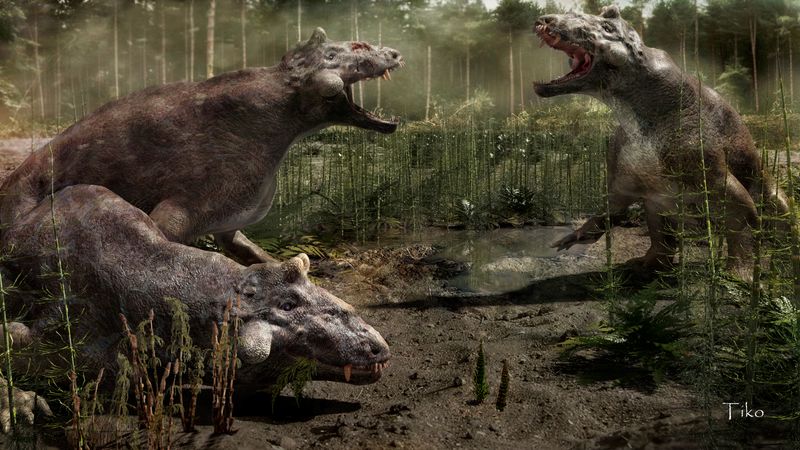
Estemmenosuchus, a bulky herbivore, wandered Permian forests. Its unique horns and large skull set it apart. Measuring around 10 feet, it feasted on lush vegetation.
Fossils indicate complex social behaviors. This herbivore’s presence highlights the diversity of prehistoric life, offering a fascinating glimpse into herbivorous adaptations before dinosaurs rose to prominence.
13. Edaphosaurus
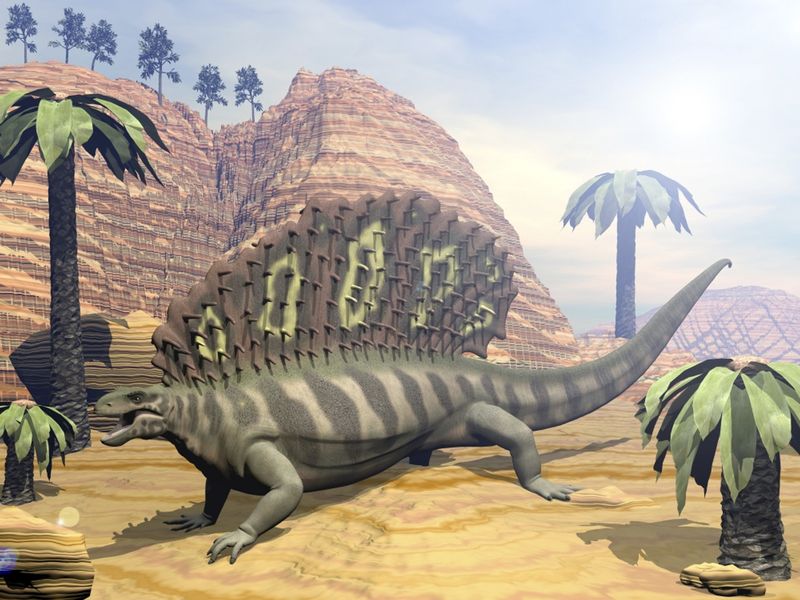
Edaphosaurus, a sail-backed herbivore, thrived during the Permian period. With a sail similar to Dimetrodon, it reached about 11 feet.
This gentle giant fed on vegetation, its sail possibly aiding in thermoregulation. Fossils reveal its sprawling limbs and unique adaptations, illustrating the rich tapestry of life that preceded dinosaur dominance.
14. Cotylorhynchus
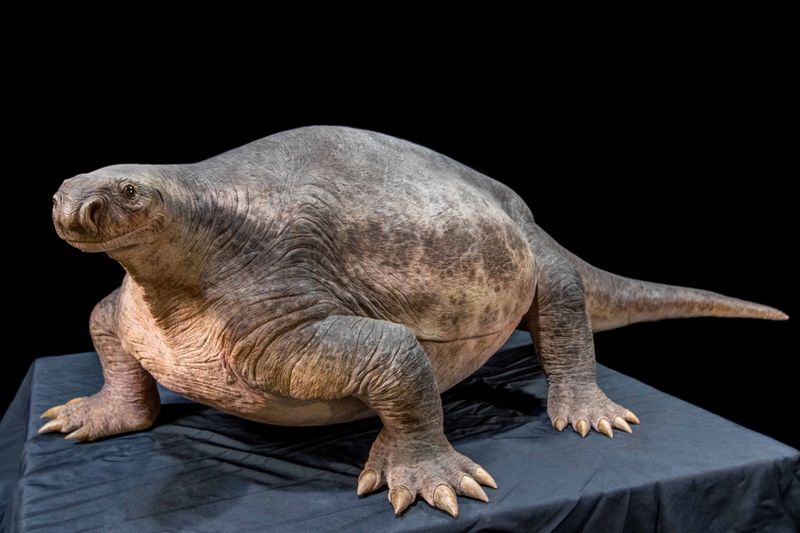
Cotylorhynchus, a barrel-bodied herbivore, roamed the Permian landscapes. Its small head and massive body spanned over 20 feet.
Feeding on plants, it shaped the ecosystem with its sheer size. Fossils highlight its distinct anatomy, capturing a creature that thrived in the lush, prehistoric world, bridging a crucial evolutionary link in reptilian history.
15. Diplocaulus
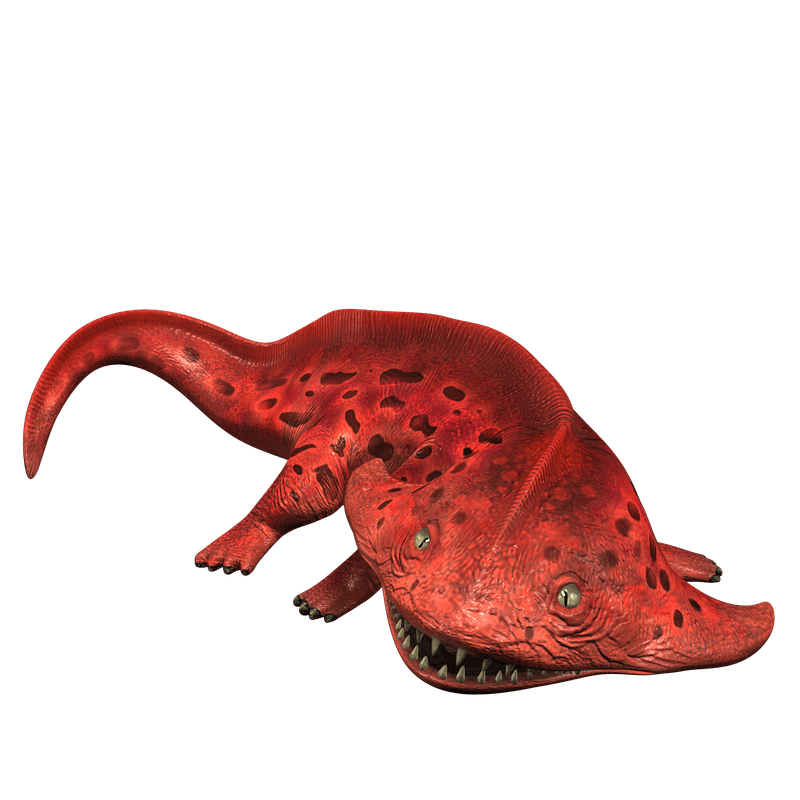
Diplocaulus, known for its boomerang-shaped head, swam the Permian waters. Its unique head likely aided in stability and navigation.
Measuring about 3 feet, this peculiar amphibian fed on small aquatic creatures. Fossils showcase its distinctive vertebrate form, painting a vivid picture of evolutionary creativity long before dinosaurs dominated the Earth.
16. Pelycosaurus
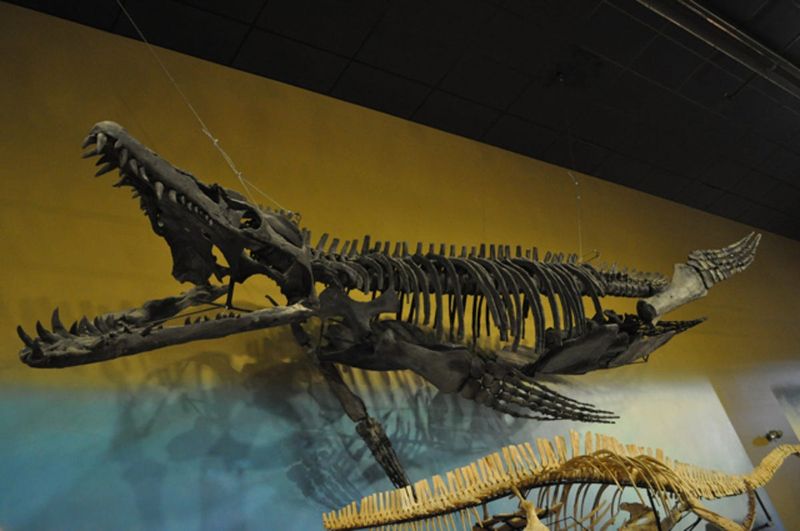
Pelycosaurus, an early sail-backed reptile, laid the groundwork for mammalian evolution. Notable for its spinal sail, it reached lengths over 10 feet.
Feeding on plants and smaller animals, it thrived in diverse habitats. Fossils reveal remarkable adaptations, showcasing a pivotal step in vertebrate evolution, preceding the rise of dinosaurs and mammals alike.


